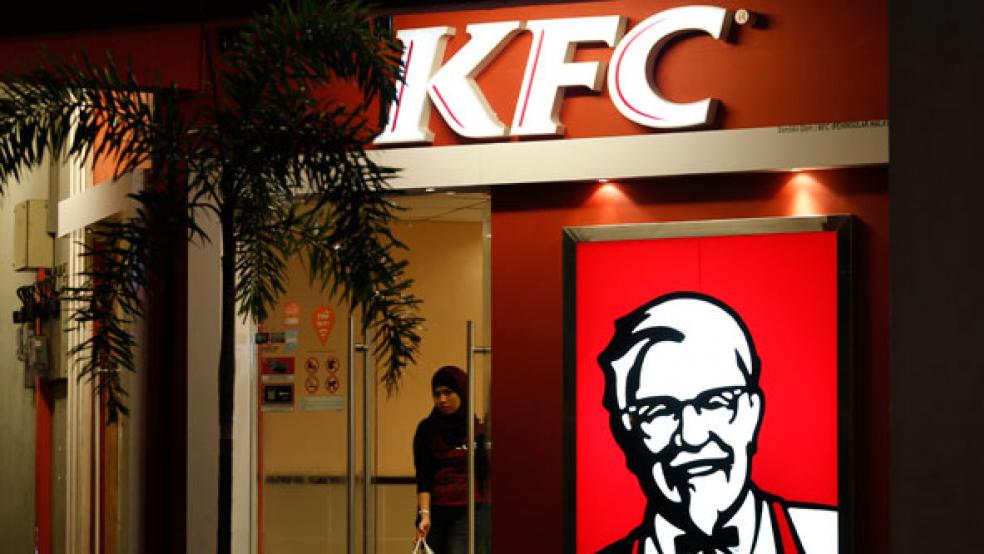Sometimes it seems like KFC is trying to do everything. Yum Brands’ (NYSE:YUM) massive chicken company, which went through a kind of menu revolution over the past few years, has gone through so many phases and so many faces that the menu is unrecognizable as the same place my Little League team used to swarm after our games.
This is obviously at least partially due to the chain’s need to adapt to a consumer base that is (or at least claims to be) increasingly unwilling to stuff fats, starches, and carbohydrates into a bucket and submerge its collective face therein. Dry-rubbed grilled chicken is a star player on KFC’s window posters. Green beans, no longer a shameful secret on the menu like an ugly cousin of the much more popular mashed potatoes or macaroni and cheese, cascade instead through KFC’s advertisements like a brilliant green waterfall or clippings of the Jolly Green Giant’s hair.
On the other hand, items like the Famous Bowl (once described by comedian Patton Oswalt as “a failure pile in a sadness bowl”) and the obscene Double Down sandwich continue to be massively popular, so much so that KFC has recently added everyone’s favorite food-improver to the Famous Bowl to create the Cheesy Bacon Bowl, advertisements for which seem almost provocative, as if KFC is daring its critics to object to its decadence.
This duality has created something of an identity crisis for KFC, and indeed for Yum in general, since many of the corporation’s restaurants straddle the line of nutritional respectability. Can a fast food restaurant really be both unhealthy and healthy? Restaurants like Chipotle (NYSE:CMG) have carved out a considerable place in the market for natural ingredients and fresh preparation. Can these restaurants capitalize on KFC’s inability or unwillingness to eliminate fat bombs like the Double Down from its menu?
One answer may simply be that KFC makes enough money in China that it can afford to maintain the unhealthy image it has cultivated in the US. KFC absolutely dominates the Chinese fast food market and has plans to expand further. However, its product lines in China are vastly different from its US offerings (the Chinese products include traditional Chinese soups, panko-crusted chicken, etc.), which means that while the chain is hugely popular in China, it can’t parlay that success back to the U.S.
Another problem for the chicken chain to deal with is its target market. At the moment, it seems as if KFC can’t decide whether to market primarily to families or to individuals. McDonald’s (NYSE:MCD) and Yum’s own Taco Bell have made big strides by abandoning the family image almost entirely; Taco Bell ads feature trendy young people Instagramming their fluorescent tacos, while McDonald’s likes showing hipsters falling in love while biting into Angus Third Pounders.
KFC, on the other hand, vacillates between showing individuals happily scarfing chicken sandwiches or the aforementioned bowls and showing families using KFC’s buckets-of-food system to feed a dozen people easily. The most recent campaign plays on the trope of irritating relatives being loud during the holiday season, which plays to the “family” side of things, but the Famous Bowls continue to be the chain’s best-selling item. Until KFC can figure out who’s buying chicken, it will continue to play second fiddle to Taco Bell in Yum’s US operations. Even more troubling is that Yum recently announced that its fourth-quarter sales in China were down. If KFC isn’t pulling its weight, it may be time for the company to figure out a clear target market and tighten up its campaigns accordingly.
This article by Jonah Loeb originally appeared on Minyanville .
More from Minyanville:
Todd Harrison: A Conversation With Raymond James' Jeff Saut!




